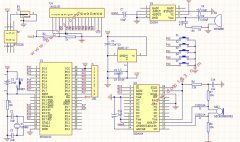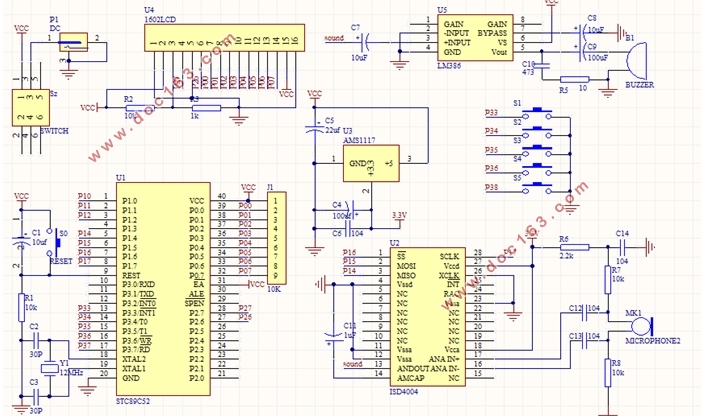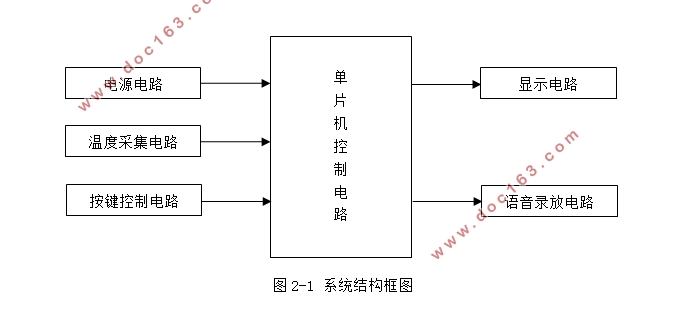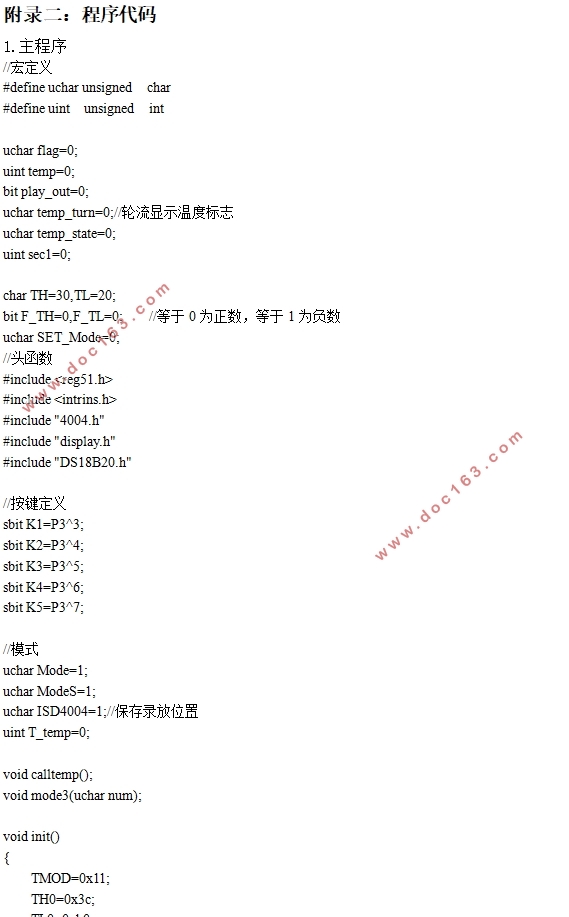多点温度监测电路的设计

1.无需注册登录,支付后按照提示操作即可获取该资料.
2.资料以网页介绍的为准,下载后不会有水印.资料仅供学习参考之用.
密 惠 保
多点温度监测电路的设计(论文14000字)
摘 要
温度是最常见的参数之一,生活和生产中时常需要测量温度,随着传感器技术的发展和日益增长的社会需求,传统的测温技术逐步被淘汰,如今的测温技术越来越趋于数字化和智能化。近年来,一种新型单总线数字式温度传感器DS18B20逐步走向市场并得到广泛的应用。本文设计了一个以单片机为控制中心的4路温度监控系统。通过DS18B20温度传感器将4路温度信号转变成数字信号送入单片机中进行温度采集,同时单片机控制LCD1602循环显示4路温度,并可以通过按键手动实时语音播报当前温度。本文设计的温度监测系统更加智能化和人性化,其多路测温功能在一定意义上改善了工作效率,具有较强的实用性。
关键字:温度传感器 多路测温 循环显示 语音播报
Design of multi point temperature monitoring circuit
Abstract
Temperature is one of the most common and the most basic parameters, both daily life and production needs the temperature detection, with the rapid development of semiconductor technology, the traditional temperature measurement technology has been unable to meet the growing needs of the community, now, temperature measurement technology and tends to be digital and intelligent. In recent years, the new single bus digital temperature sensor began to come out and get a wide range of applications, the most representative of the United States, Dallas, the production of DS18B20 temperature sensor. In this paper, a temperature monitoring system based on DS18B20 sensor is designed, which is controlled by MCU. The system will be 4 temperature signal directly into the digital signal into the microcontroller for real-time collection, through the LCD1602 LCD module will result in circular display, manual real-time voice broadcast the current temperature. In this paper, the design of temperature monitoring system is more intelligent and humane, and its multi-channel temperature measurement function in a certain sense to improve the efficiency of the work, with a strong practical.
Key Words:Temperature Sensor;Multiplex Temperature Measurement;Cyclic Display;Voice Announcements
[资料来源:THINK58.com]



目 录
摘 要 I
Abstract II
第一章 绪论 1
1.1 课题背景和研究意义 1
1.2 温度监测的现状及发展 1
1.3 温度监测的原理 2
1.4 设计要求 2
1.5 设计思路 2
第二章 硬件电路设计 4 [资料来源:http://THINK58.com]
2.1 系统的结构框图 4
2.2 主要单元电路设计 4
2.2.1电源电路设计 4
2.2.2 温度采集电路设计 5
2.2.3 按键控制电路设计 6
2.2.4 单片机控制电路设计 7
2.2.5 显示电路设计 9
2.2.6 语音录放电路设计 10
第三章 系统的软件设计和硬件仿真 14
3.1 系统的软件设计 14
3.1.1 开发工具介绍 14
3.1.2 系统程序设计 14
3.2系统的硬件仿真 16
3.2.1 仿真环境介绍 16
3.2.2 仿真过程 16
3.2.3 仿真结果 17
3.2.4 结果分析 19
第四章 硬件调试和数据分析 20
4.1 调试过程 20
4.2 调试结果 20
4.2.1 温度循环显示 20
4.2.2 语音录制 21 [资料来源:THINK58.com]
4.2.3 任意一路温度调用 21
4.2.4 语音播报 22
4.2.5 温度上下限调整 22
4.2.6 语音提示超过量程 22
4.3 数据分析 23
4.3.1 数据采集 23
4.4.2数据分析 23
4.4.3 误差分析 24
参考文献: 25
附录一:系统总体电路图 27
附录二:程序代码 28
